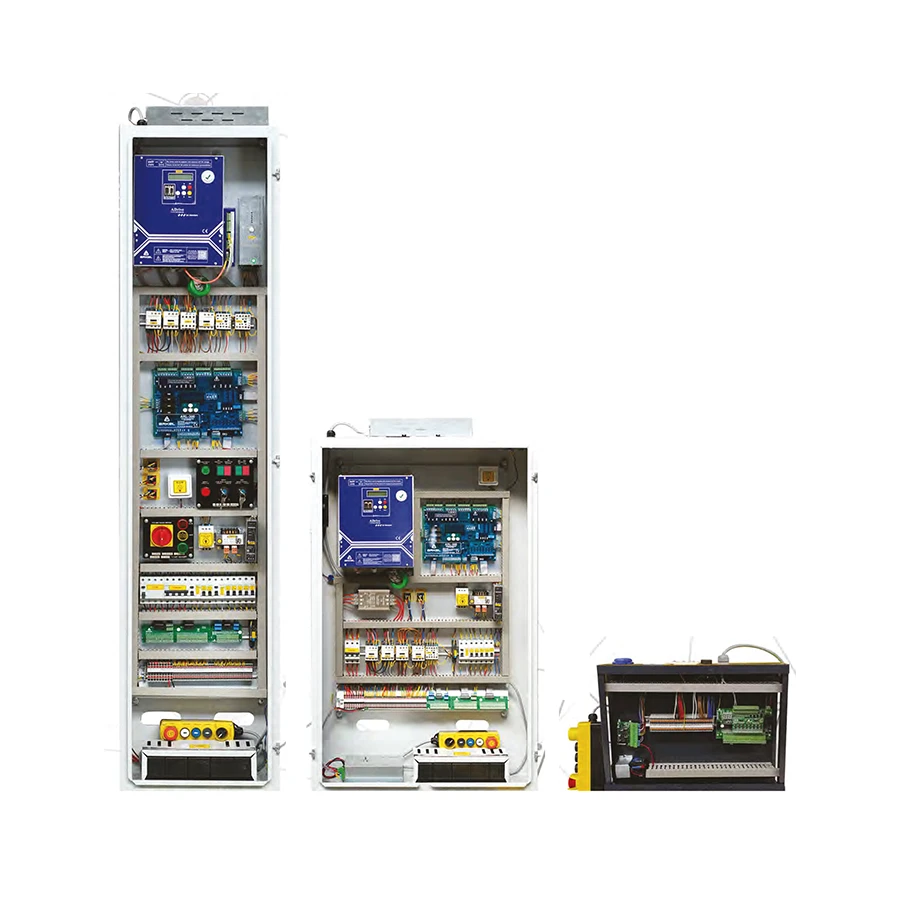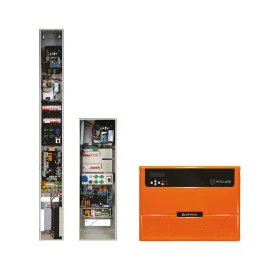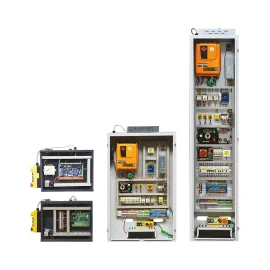Description
| Number of Stops | 24 |
|---|---|
| Electrical Installation | Parallel connection with cabin and floor button location. |
| Cabin position information | Magnetic switch or motor encoder |
| Door Bridging | Available |
| Models | 5.5 kW(14A) 7.5 kW(17A) 11 kW(26A) 15 kW(35A) 22 kW(50A) 37 kW(75A) |
| Control Type | Single Button, Double Button, Simple Control |
| Group Type | Up to 4 Elevators |
| Elevator Speed | Max: 1.6 m/s |
| Elevator Standard | En 81-1/2+A3 |
| Recovery Type | Bringing to the floor with 60 VDC 5 batteries |
| Takeoff Hold | Preventing slippage during take-off with pre-torque and start-up hold functions |
| Language Option | Turkish, English, French, Spanish, Russian |
| Encoder Options | 5V TTL, 10-30V HTL, EnDat, SSI, SinCos, BISS |
Basic operating principles of elevator control panels:
- Input signals: The elevator control panel receives signals from the floor buttons and in-cabin buttons. These signals determine which floor passengers want to go to and the direction in which the elevator should move.
- Control card and microprocessor: The control card and microprocessor located in the elevator control panel process the incoming signals and produce the necessary commands to adjust the movement and speed of the elevator.
- Motor driver: Commands from the control card are directed to the motor driver that operates the elevator motor. The motor driver controls the speed and torque of the elevator motor so that the elevator delivers passengers to the desired floor safely and comfortably.
- Speed and position sensors: The elevator control panel is in communication with sensors that also monitor the speed and position of the elevator. These sensors provide feedback to ensure the elevator is moving at the appropriate speed and stopping at the correct floor.
- Security and emergency systems: The elevator control panel is integrated with various security systems and emergency devices to ensure the safe operation of the elevator. These systems include overload, door lock, emergency brake and rescue functions in case of power failure.
- Communication: The elevator control panel also communicates with building management systems and maintenance teams to monitor and report the elevator’s status and performance.


